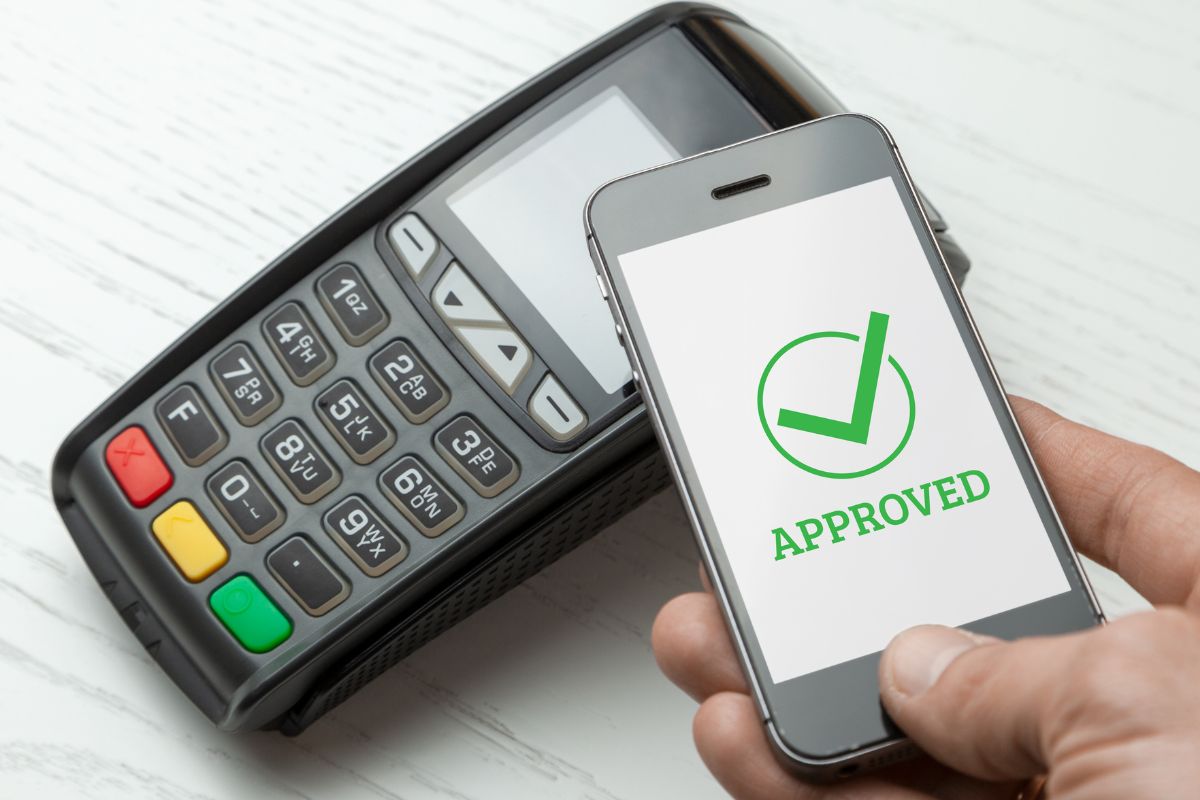Dropshipping is a streamlined business model that allows you to sell products to your customers without maintaining a physical inventory. Instead, when you sell an item in your online store, the order is sent to a third-party supplier who ships it directly to your customer. This method reduces the risk and capital required to start and scale your e-commerce business. Shopify, a leading e-commerce platform, provides a user-friendly interface that simplifies the process of creating and managing a dropshipping business.
Setting up a dropshipping store on Shopify can be straightforward. You will need to create an account, customize your store’s design, and select products to sell from suppliers. Shopify integrates with various dropshipping apps and tools that make finding and adding products to your shop a hassle-free experience. These integrations also help update your product listings automatically with the supplier’s inventory levels to ensure the products you sell are always in stock.
With dropshipping, the key to success lies in selecting niche products that appeal to a specific audience and crafting high-quality product listings that convert visitors into buyers. Marketing your store effectively is another vital component, as it drives traffic to your storefront and maximizes sales. By harnessing the capabilities of Shopify, you’re equipped with a comprehensive suite of tools to help you build a successful online dropshipping store.
Understanding Dropshipping
Dropshipping allows you to sell products without holding inventory, and Shopify provides the platform to establish this business model efficiently.
Dropshipping Basics
In dropshipping, you, the store owner, sell items online without the need for physical inventory. When a customer places an order in your Shopify store, you pass the order details to a supplier or wholesaler, often leveraging platforms like AliExpress. The supplier then ships the product directly to the customer. This business model allows you to focus on marketing and customer service rather than worrying about stocking products.
- Key Components:
- E-Commerce Platform: Shopify acts as the foundation for your online storefront.
- Supplier Relationships: Partnering with reliable suppliers is crucial.
- Order Fulfillment: Suppliers handle the shipping of products.
- Customer Interaction: You manage marketing, customer inquiries, and after-sales services.
Advantages and Challenges
Advantages:
- Low Overhead Costs: Since you’re not holding any inventory, you avoid the costs associated with warehousing.
- Flexibility: You can offer a wide range of products without investing in stock.
- Scalability: Dropshipping can be scaled easily depending on demand, without major upfront investments.
- Challenges:
- Supplier Reliability: Your reputation hinges on the reliability of your suppliers, and any delays or issues on their part directly affect your customers.
- Competition: With low barriers to entry, dropshipping is highly competitive.
- Profit Margins: As a middleman, your profits are a percentage of the sale, which can be slim in highly competitive niches.
By understanding these fundamentals and potential hurdles, you can navigate the dropshipping business with confidence and grow your enterprise on Shopify.
Setting Up Your Shopify Store

To establish a solid foundation for your online store, it’s essential to carefully select a domain name, create a Shopify account, and customize your store to align with your brand. This setup is the groundwork that will define your online presence and set the stage for your future success.
Choosing a Domain Name
Your domain name is your digital address—it’s how customers find you online. Aim for a name that is short, memorable, and reflective of your brand. Remember that a .com extension is often seen as most trustworthy, although other options like .store or .shop can be appealing for e-commerce. An appropriate domain name enhances your store’s professional appearance and contributes to customer trust. Be sure to check the availability of your preferred name early on.
Creating a Shopify Account
To get started, visit the Shopify website and click on the ‘Start free trial’ button. You’ll need to provide a valid email address, create a password, and name your store. Be aware that your store name will influence your Shopify domain (yourstorename.myshopify.com), which you can later connect to a custom domain. Following these steps, Shopify will guide you through the process of setting up your account, including the essential verification steps to ensure your store’s security.
Store Customization
Customizing your store involves various steps to ensure your brand stands out and provides a positive user experience. In your Shopify dashboard, go to the ‘Themes’ section to choose a layout that suits your brand’s aesthetic. Use the customization tools to add your logo, set color schemes, and decide on font styles. Additionally, consider setting up SSL (Secure Socket Layer) certification for your store to ensure all data processed is secure, a feature Shopify includes automatically to build trust with your customers. Finally, organize your products into collections, and create compelling product descriptions to attract customers.
Selecting Your Niche and Products

Before diving into the world of dropshipping on Shopify, understanding how to carefully pick your niche and products is paramount. This will set the foundation for your store’s potential success by aligning with market demand and standing out amidst competition.
Market and Competitive Research
To ensure you select a niche that offers growth and profit potential, conduct thorough market research. Identify trends and customer needs within different segments to pinpoint where there’s demand that’s not oversaturated by competitors. Utilizing tools like Google Trends can give you insightful data on what’s currently popular or gaining interest. Additionally, scrutinizing competitors is essential. Look at their product selections, pricing strategies, and how they market themselves. Assessing stores that have succeeded in establishing a dropshipping e-commerce store can provide valuable insights.
Finding Profitable Products
Seeking out profitable products involves more than just picking items you like—it’s a strategic endeavor. Select dropshipping products that have a balance of high demand and low enough competition so you can carve out your market share. Keep an eye out for items with good margins, as they’ll contribute significantly to your profitability. Meanwhile, verifying supplier reliability, considering shipping times, and ensuring product quality are equally crucial steps. Resources like Guidebook: how to set up an online Dropshipping store can guide you in filtering through an extensive list to choose the right products. Remember, success in dropshipping often comes down to offering the right products to the right niche at the right time.
Finding Reliable Suppliers
When setting up a dropshipping store on Shopify, selecting trustworthy suppliers is crucial. Your business’s success heavily depends on the quality, reliability, and consistency of your suppliers’ products and shipping times.
Supplier Research
Begin with in-depth research to identify potential dropshipping suppliers. Platforms like Spocket offer a database of suppliers primed for Shopify integration. Utilize filters to narrow down suppliers that match your niche and have sound reputations. Additionally, explore other marketplaces such as AliExpress, renowned for a vast array of products and suppliers. Compile a list of potential suppliers, ensuring a blend of variety and quality.
- Use Filters: Sort through suppliers on marketplaces based on customer ratings, fulfillment times, and product quality.
- Check Reviews: Look for feedback on supplier performance, both on the platform and through independent forums.
- Product Range: Ensure they have a range of products that fits your niche and inventory needs.
Vetting Suppliers
After assembling a list of potential suppliers, it’s time to vet them rigorously. Order samples to personally assess product quality and delivery speeds. Communicate with suppliers to gauge their responsiveness and support level. Tools like CJDropshipping can help analyze supplier reliability and product assortments.
- Order Samples: Test product quality and supplier reliability by ordering for yourself.
- Communication: Reach out to potential suppliers to assess their responsiveness and support services.
- Track Record: Look at the supplier’s history, how long they’ve been in business, and their track record for consistent service.
Thorough vetting ensures a long-term, beneficial partnership with your chosen dropshipping suppliers. Prioritize suppliers who show a commitment to quality, reliability, and communication, fit for a growing Shopify store.
Integrating Products and Suppliers

When establishing your dropshipping store on Shopify, the critical components are theproducts you sell and thesuppliers you partner with. Seamless integration of these elements is vital for the smooth operation of your business.
Using Shopify Apps for Integration
Shopify provides an ecosystem of apps designed to simplify the connection between your store and various suppliers. The DSers app, for instance, is a popular choice that allows you to import products from multiple suppliers into your store. With DSers, you can:
- Automate order fulfillment.
- Find suppliers with competitive prices.
- Bulk order products.
Apps for integration not only save you time but ensure your product catalog is up-to-date with your supplier’s inventory.
Syncing Products with Your Store
Once you’ve chosen your integration app, syncing products with your Shopify store becomes the next step. Here’s a straightforward process to keep in mind:
- Install the integration app from the Shopify App Store.
- Connect the app to your chosen suppliers.
- Select products and import them to your store.
- Set your pricing and customize product details.
- Enable the app to automatically update product availability based on supplier inventory.
Proper integration ensures that your products are in sync with supplier stock levels, prices, and any changes to product variants.
Configuring Your Store Settings

When setting up your Shopify store, configuring your store settings is crucial for ensuring seamless transactions and delivery. In this section, we’ll focus specifically on how to set up payment gateways and shipping and fulfillment options, which are foundational elements for running a successful e-commerce platform.
Setting Up Payment Gateways
To accept payments on your Shopify store, you need to set up payment gateways. Shopify supports various payment methods including credit cards, PayPal, and alternative payments like cryptocurrencies.
- Navigate to your Shopify admin dashboard, go to Settings, and then choose Payments.
- Select a payment provider from Shopify’s extensive list or set up a third-party provider by clicking on Choose third-party provider.
- Follow the instructions to add your payment information for the selected payment provider.
- Review the transaction fees and payout schedules to ensure they align with your business plan.
Remember to activate all the payment methods you want to offer and verify your account to avoid disruptions. This step is key to ensuring your customers have a smooth checkout experience.
Shipping and Fulfillment Options
Shipping settings in Shopify are flexible, allowing you to provide your customers with various shipping options. Manage these effectively to optimize your shipping and fulfillment process.
- In your Shopify admin, go to Settings and then Shipping and Delivery.
- Set up your shipping zones — regions where you deliver products. You can create different zones for domestic and international shipping.
- Define your shipping rates. You can offer free shipping, flat-rate shipping, or calculate rates based on the actual price or weight of the items.
- If you are dropshipping, integrate with popular fulfillment services such as Oberlo. It allows product import from suppliers directly into your store and sends customer orders to your suppliers with ease.
- Consider using Shopify’s calculated shipping rates with supported carriers to automatically provide real-time shipping rates at checkout.
By accurately setting up your payment gateways and shipping options, you are creating a strong foundation for your store’s operations andcustomer satisfaction.
Optimizing Your Store for Sales

To effectively boost your Shopify store’s sales, focus on crafting compelling product descriptions and extending your reach with integrated sales channels. These strategies are essential for captivating potential customers and expanding your market presence.
Creating Engaging Product Descriptions
Your product descriptions are the voice of your products; they serve not just to inform but also to persuade. Start by conducting thorough product research to understand what sets your items apart. Use this knowledge to highlight key features that answer a potential buyer’s question: “What’s in it for me?” Keep each description concise, but rich in details, and always aim to solve a problem or address a need. For example:
- Feature: Waterproof
- Benefit: Ideal for outdoor adventures, keeping contents dry and safe
Remember to include relevant keywords for SEO to help your products become more visible in search results.
Setting Up Sales Channels
Utilize various sales channels to maximize your product exposure. In your Shopify dashboard, you can add channels with ease, directing you to places where your targeted customers already shop. Think beyond the Shopify store; consider including:
- Marketplaces: Amazon, eBay, etc.
- Social Media: Instagram Shop, Facebook Marketplace
Ensure these channels are in sync with your store to provide a seamless shopping experience. This helps not only to optimize sales but also to implement effective marketing strategies across multiple platforms, keeping your branding consistent and your outreach powerful.
Marketing and Customer Acquisition

In the competitive world of dropshipping on Shopify, understanding your marketing tools and strategies is essential for customer acquisition. Strong emphasis on social media engagement, search engine optimization, and email marketing will place your store ahead of the game.
Leveraging Social Media Platforms
Facebook and other social media platforms offer unrivaled opportunities to connect with your target audience. Start by creating shareable content that resonates with your potential customers. Utilize Facebook Ads to pinpoint and reach out directly to those who are most likely to be interested in your products. Engage regularly with your followers to build brand loyalty and facilitate word-of-mouth promotion.
Implementing SEO Strategies
Search engine optimization (SEO) is a long-term investment that pays off by increasing your store’s visibility in Google searches. Start with keyword research to understand what potential customers are searching for. Optimize your Shopify product pages and descriptions with these keywords. Remember, a well-structured website with quality backlinks will also climb the search engine rankings, drawing more organic traffic to your site.
Email Marketing and Retargeting
Collect emails through your Shopify store to build a robust email marketing campaign. Craft newsletters that include promotions and new product launches to keep your audience engaged. Retargeting, a form of advertising that allows you to show targeted ads to users who have visited your site, can be highly effective in bringing customers back to complete a purchase. Use website visitor data to serve personalized ads across Google and social media networks to maximize conversion rates.
By applying these focused marketing strategies, you set the stage for a successful dropshipping business with a steady influx of new and returning customers.
Managing Orders and Customer Service

In the dropshipping model on Shopify, efficient management of orders and a robust customer service system are pivotal to your success. Proper order fulfillment and customer support serve as the foundation for a sustainable business.
Streamlining Order Fulfillment
To ensure a smooth order fulfillment process, start by setting up an automated system. Utilize apps like Oberlo to connect your Shopify store with suppliers, which facilitates the easy import and management of products. Moreover, automation enables you to forward customer orders to your suppliers swiftly and accurately. Focus on:
- Order Tracking: Implement real-time order tracking to keep both you and your customers informed about the status of their purchases.
- Packaging: Collaborate with suppliers to ensure products are adequately packaged, minimizing the risk of damage during transit.
- Shipping Costs: Be transparent about shipping costs and strive to offer competitive rates, potentially by negotiating better terms with your suppliers.
Providing Excellent Customer Service
Your customers’ satisfaction hinges on how well you handle their inquiries and resolve their issues. Concentrate on delivering exceptional customer service by:
- Responsiveness: Maintain quick response times and provide comprehensive solutions to customer queries.
- Issue Resolution: Address and resolve customer complaints promptly, which builds trust and can lead to repeat business.
- Support Channels: Offer multiple customer support channels, such as email, phone, and live chat, to cater to different preferences.
Remember that managing customer orders effectively and ensuring a positive experience with your customer service can distinguish your Shopify dropshipping store in a competitive market.
Monitoring Your Business Performance
Accurate performance monitoring is crucial to managing a sustainable and profitable ecommerce store on Shopify. This involves meticulous tracking of sales data and responsible financial planning.
Tracking and Analyzing Sales Data
To optimize your Shopify store’s profit margins, you need to track and measure sales performance rigorously. Make it a habit to recognize patterns and trends within your sales data; this will give you insight into customer preferences and product success. Utilize the analytics tools provided by Shopify to keep a detailed record of your sales, understanding which products are successful and why. You can consider these key metrics:
- Total Sales: Keep a daily, weekly, and monthly tally.
- Return on Investment (ROI): Calculate by subtracting the cost of goods sold from your net sales.
- Customer Acquisition Cost (CAC): Track how much you spend to acquire one paying customer.
- Conversion Rate: The percentage of visitors to your store that make a purchase.
By doing so, you can glean actionable insights to make data-driven decisions that boost profitability.
Financial Planning and Forecasting
Your store’s finances involve more than just watching your bank account. It’s about rigorous budgeting and forecasting to ensure long-term profitability. Here’s how you can stay on top of your finances:
- Budget: List your monthly expenses — everything from hosting fees, marketing costs, to any third-party service fees. This will help you keep track of your outgoings and manage your cash flow.
- Forecast: Based on past data, predict future sales and expenses. This proactive approach will help prepare you for upcoming financial needs and adjustments you might need to make.
Ensure that you’re not just breaking even, but actually generating a profit after accounting for all expenses. The goal is to have a healthy profit margin that allows for growth and stability in your business.
Growing and Scaling Your Business

To transform your dropshipping business into a lucrative, long-lasting enterprise, it’s essential to implement effective scaling strategies and broaden your selection of products carefully.
Strategies for Scaling Your Business
Assess Your Business Structure: Before you scale, ensure that your current business structure is suitable for expansion. Are your processes streamlined for efficiency? Can your customer service handle a significant increase in inquiries? Adjust your infrastructure to manage growth smoothly.
Global Market Penetration: Look to penetrate global markets. If your business has established a strong domestic presence, international expansion could be your next step. Identify products with a global appeal and localize your marketing efforts to reach new customers.
Optimize for Profitability: Your focus should be on profitability, not just revenue. Find ways to reduce expenses – negotiate better deals with suppliers, streamline your logistics, and increase average order value.
Expanding Your Product Lines
Market Research is Key: Understand what your customers want by engaging with them and conducting market research. Trends change, and staying ahead gives you a competitive edge.
Introduce New Products Carefully: When you expand your product lines, do so incrementally to minimize risk. Test new items on a smaller scale before a full launch to gauge customer interest and ensure that new products complement existing ones to maximize cross-selling opportunities.
Remember, growing and scaling your dropshipping business on Shopify is an exciting journey. Stay focused on these strategic areas to build a robust, scalable business that can thrive in the competitive e-commerce landscape.
Frequently Asked Questions
Starting a dropshipping business on Shopify involves understanding best practices, selecting reliable suppliers, and comprehending the costs and steps to ensure profitability.
What are the best practices for starting a dropshipping business on Shopify?
To begin dropshipping on Shopify effectively, focus on selecting a niche market, designing a user-friendly website, and implementing strong marketing strategies. Optimize your product pages for conversions and ensure your customer service is top-notch.
How do I find and select reliable suppliers for Shopify dropshipping?
Finding reliable suppliers for your Shopify dropshipping business is crucial. Look for suppliers with positive reviews on platforms like AliExpress, or use apps like Oberlo that integrate with Shopify to find products with a proven track record of quality and timely shipping.
Can you dropship on Shopify for free, and if so, what limitations might there be?
You can start a Shopify dropshipping store with a 14-day free trial, but you will encounter limitations, such as needing a paid plan to launch the store and access advanced features. Essential functionalities like real-time shipping rates and staff accounts require a subscription.
What steps are involved in setting up a dropshipping store with Shopify for beginners?
Setting up involves creating a Shopify account, customizing your store’s theme, adding products, and setting up payment and shipping options. Beginners should also focus on legal and tax considerations before launching the store.
What costs can I expect when starting a dropshipping business on Shopify?
Expect costs like Shopify’s monthly subscription fee after the trial, domain registration, any paid apps or themes, marketing and advertising expenses, and transaction fees. Budgeting for these will help manage your expenses effectively.
Is it possible to be profitable with dropshipping on Shopify, and how can I maximize my chances?
Profitability with Shopify dropshipping is possible by choosing high-demand, low-competition products, optimizing for SEO, and utilizing effective advertising campaigns. Regularly analyzing your store’s performance can provide insights on where to improve and maximize profits.



